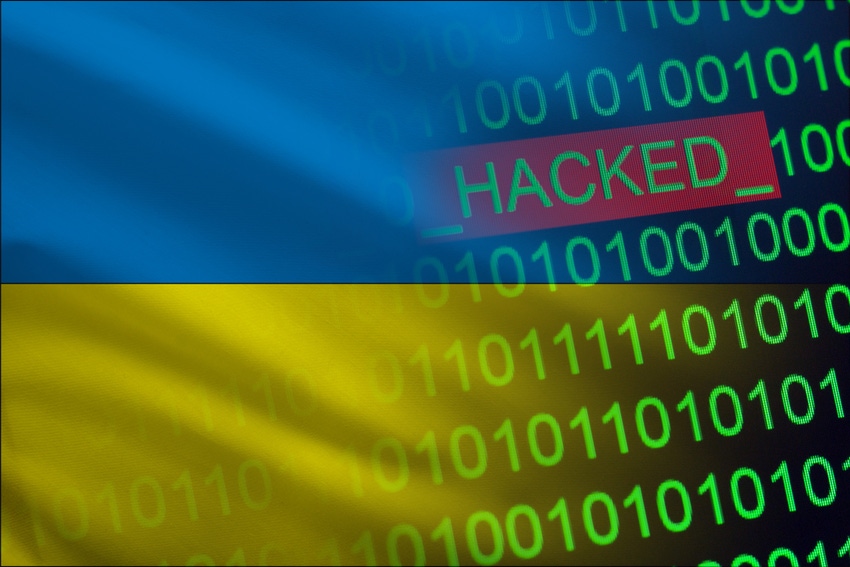Latest campaigns are a break from its usual financially motivated attacks and appear aligned with Russian interests, security researchers say.
July 8, 2022

In a break from precedent, Russia's hitherto purely financially motivated Trickbot threat group has systematically been attacking targets in Ukraine over the past three months, apparently in support of Russian government interests in the region.
Researchers from IBM's X-Force threat intelligence group this week said they had uncovered two campaigns — and analyzed four others that Ukraine’s Computer Emergency Response Team (CERT-UA) disclosed — where Trickbot went after targets in Ukraine. The campaigns began after Russia’s invasion of Ukraine in February and have targeted Ukrainian state authorities, government organizations, specific individuals, and the general population. Several of the attacks have involved phishing emails with various themes designed to grab the attention of Ukrainian users — included some that are war-related.
The attacks highlight an unprecedented shift for Trickbot, and it's notable because threat groups in former Soviet Union states have typically avoided attacking targets in each other’s countries, IBM said.
Prior to the Russian invasion, ITG23, which is the name by which IBM tracks Trickbot, had not been known to target Ukraine. "Much of the group's malware was even configured to not execute on systems if the Ukrainian language was detected," IBM said in a report summarizing its findings this week. "ITG23's campaigns against Ukraine are notable due to the extent to which this activity differs from historical precedent and the fact that these campaigns appeared specifically aimed at Ukraine with some payloads that suggest a higher degree of target selection."
Multiple Malware Tools
IBM said it has observed Trickbot distributing several known malware tools such as IcedID, Cobalt Strike, AnchorMail, and Meterpreter in its attacks on Ukrainian targets. Some of the attacks involved the use of new tools such as a malicious Excel downloader, a self-extracting archive for dropping various malware payloads and a new malware encryption and obfuscation tool.
One of the two Trickbot campaigns that IBM uncovered was in early May. In those attacks, IBM observed the threat actor using a weaponized Excel file to download its AnchorMail backdoor on compromised systems. AnchorMail is a revamped version of Trickbot’s AnchorDNS, a backdoor that members of the closely affiliated Conti group have been using to deploy Conti ransomware. IBM X-Force researchers have previously described the malware as notable for communicating with its command-and-control (C2) server using the DNS protocol.
The second recent Trickbot campaign that IBM X-Force researchers spotted occurred likely in late May or early June. In that campaign, Trickbot actors used an ISO image file — or archive file containing the contents of an optical disk — as part of an attack chain to drop the Cobalt Strike post-exploit attack kit on target system. In June, Trickbot users were observed exploiting the so-called “Follina” zero-day bug in the Windows Microsoft Support Diagnostic Tool (MSDT) to deploy Cobalt Strike.
The campaigns that CERT-UA disclosed, and which IBM X-Force researchers analyzed, involved Trickbot attempts to deploy IcedID, a banking Trojan turned malware distributor; Metasploit attack payload, Meterpreter; and Cobalt Strike. In five of the six observed campaigns, Trickbot actors directly downloaded Cobalt Strike, AnchorMail, or Meterpreter on target systems — another break from their usual habit of deploying these tools as secondary payloads. IBM said the switch suggests "these attacks are part of targeted campaigns during which ITG23 is willing to immediately deploy higher-value backdoors."
IBM described the new malicious Excel downloader that Trickbot is using in the Ukrainian attacks as designed to download malware from a hard-coded URL. The downloader is stored as a macro within the Excel file and runs automatically if the file is opened — provided the user has macros enabled. The new dropper for AnchorMail that IBM observed is in the form of a WinRAR Self Extracting Archive. The dropper is rigged to extract and execute a script for building and configuring AnchorMail on infected systems.
Trickbot is a highly successful threat group that has been around since at least 2016. The group initially used its eponymously named malware to steal credentials to banking accounts. Over the years, the group evolved into a sort of initial access broker and a distributor for several ransomware and malware tools, most notably Conti and Ryuk and Emotet. Trickbot is used variously for stealing data, enabling cryptomining, enumerating systems, and other malicious activities.
Court documents in connection with the arrest of a key member of the group last year showed that nearly 20 cybercriminals — including several malware experts — collaborated in building the malware. A massive 2020 international law enforcement operation to take the threat actor down temporarily disrupted its activities but failed to stop them.
About the Author(s)
You May Also Like
Beyond Spam Filters and Firewalls: Preventing Business Email Compromises in the Modern Enterprise
April 30, 2024Key Findings from the State of AppSec Report 2024
May 7, 2024Is AI Identifying Threats to Your Network?
May 14, 2024Where and Why Threat Intelligence Makes Sense for Your Enterprise Security Strategy
May 15, 2024Safeguarding Political Campaigns: Defending Against Mass Phishing Attacks
May 16, 2024
Black Hat USA - August 3-8 - Learn More
August 3, 2024Cybersecurity's Hottest New Technologies: What You Need To Know
March 21, 2024




